In Florida, where our day may begin by picking oranges from the back yard and end with walking the dog on the beach, a large tote bag like this is considered essential. It can hold two dozen assorted oranges and grapefruit, 8 yards of quilting fabric from the Presidents’ Day Sale , a sweater, bib, book, diaper and zip lock of cookies  for the grandchildren as well as  a well behaved Labrador puppy who will nap quietly until you are at the beach for his walk. Probably. Maybe more.
Linda McGehee’s Tote, Clutch, Cosmetic Bag #851 pattern was modified for this tote. It required only lengthening the body of the tote to accommodate pleasing placement of the quilt squares.
This versatile bag is made up of 24 identical, deceptively simple blocks. For people like my friend Judy Day, who purports not only to dislike quilting but also to lack the necessary skills–and yet does a fair amount of it– this project and its techniques are ideal.
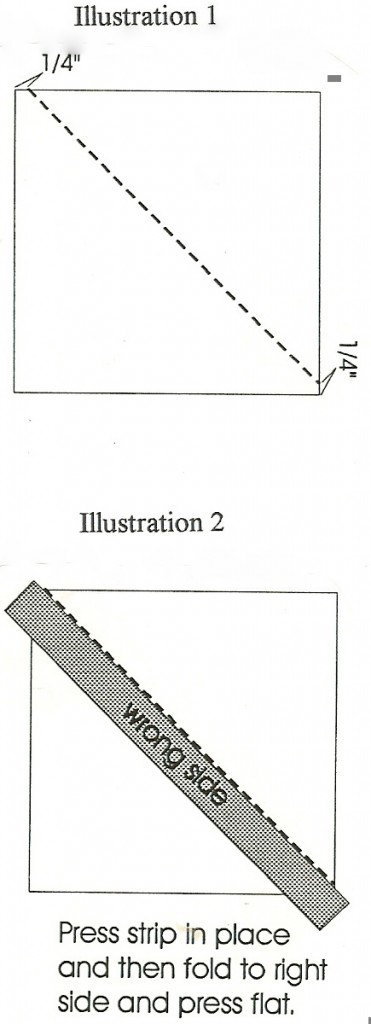 The block pattern, which has endless variations, can be studied in more detail in its original form in Eleanor burns’ book. Scrap Quilting.
The block pattern, which has endless variations, can be studied in more detail in its original form in Eleanor burns’ book. Scrap Quilting.
An ideal pattern for beginners, it offers the advantage or putting precious scraps to good use while learning a new skill.
Basically, 8″ squares are cut from a foundation fabric, pima broadcloth in this case. On each square, a diagonal line is drawn from corner to corner, 1/4″ from the diagonal center.
A Hera marker makes a crease and is perfect for situations like this because there are no blue lines to wash out.
I also use an old silver butter knife which works just as well.
Approximately 1 yd. of Liberty strips are cut or torn into strips 3/4″ to 1 3/4″ wide and in length from 10″ to 1 1/2″. These need not be on the straight of grain. A 10 strip is placed face down, covering the diagonal center with the raw edge on the drawn line. Stitch in place with 1/4″ seam allowance, then press away from center.
Place the next strip face down on the first strip with raw edges matching. This seam allowance can be any size from 1/8″ and up. If two adjoining strips are of the same size, rather than re-cutting the second strip, simply use a wider seam allowance to achieve a different finished width. If seam allowance is greater than 1/4″, trim away excess after stitching.
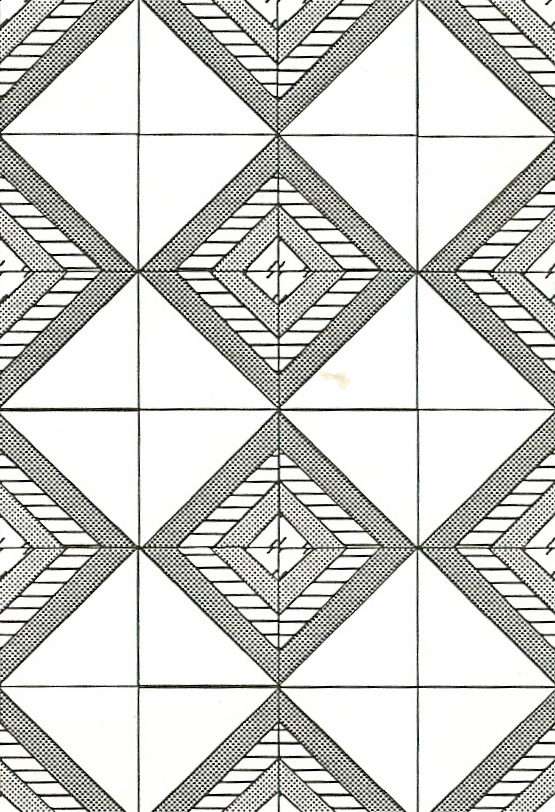 Continue in this manner until that half of the square is covered. The diagram shows how the blocks are laid out. The strips are shown as being the same size but I chose to vary the size for a scrappier look.
Continue in this manner until that half of the square is covered. The diagram shows how the blocks are laid out. The strips are shown as being the same size but I chose to vary the size for a scrappier look.
After the blocks were  assembled, the same design was machine embroidered in the ivory square created by the 4 ivory half square triangles.  Then Linda’s pattern directions are clear as to how to finish the bag.
Of course, there are other fine points to quilting, but this post is too long already. Suffice it to say that the quilter’s mantra, “accuracy, accuracy, accuracy” is not to be forgotten. It is the goal in cutting, in sewing and even in pressing.
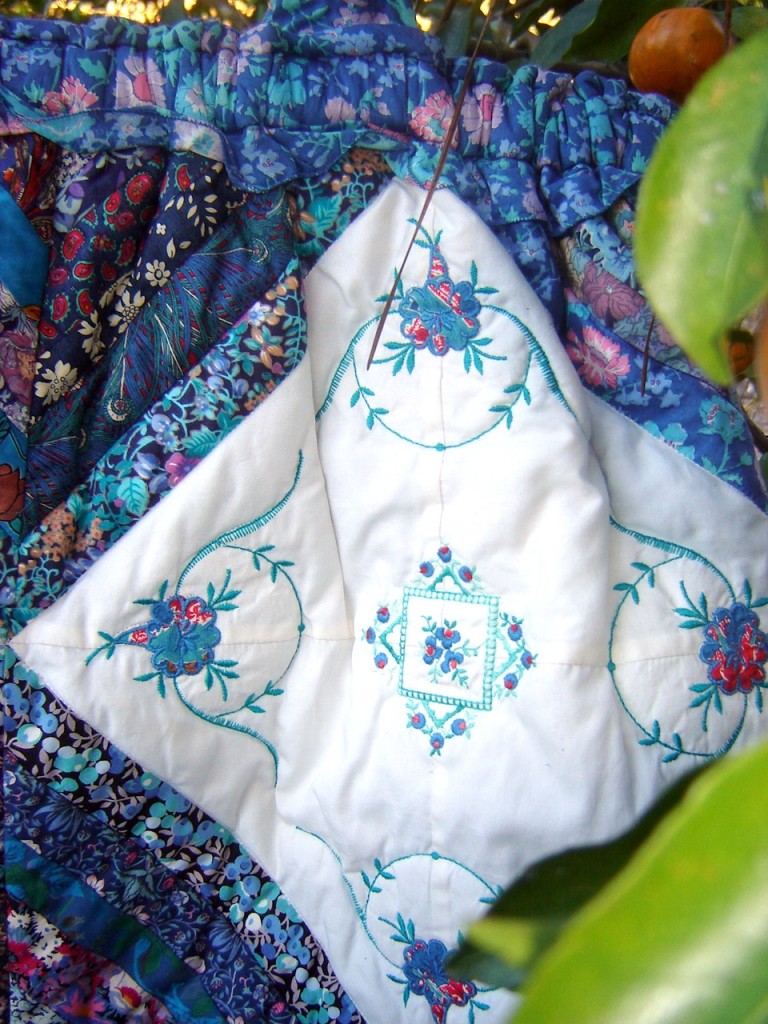
I have used this bag for my purchases at sewing markets. My daughter had planned to use it for a diaper bag, but she loves Liberty as much as I do and couldn’t bring herself to put the bag to such a utilitarian use.
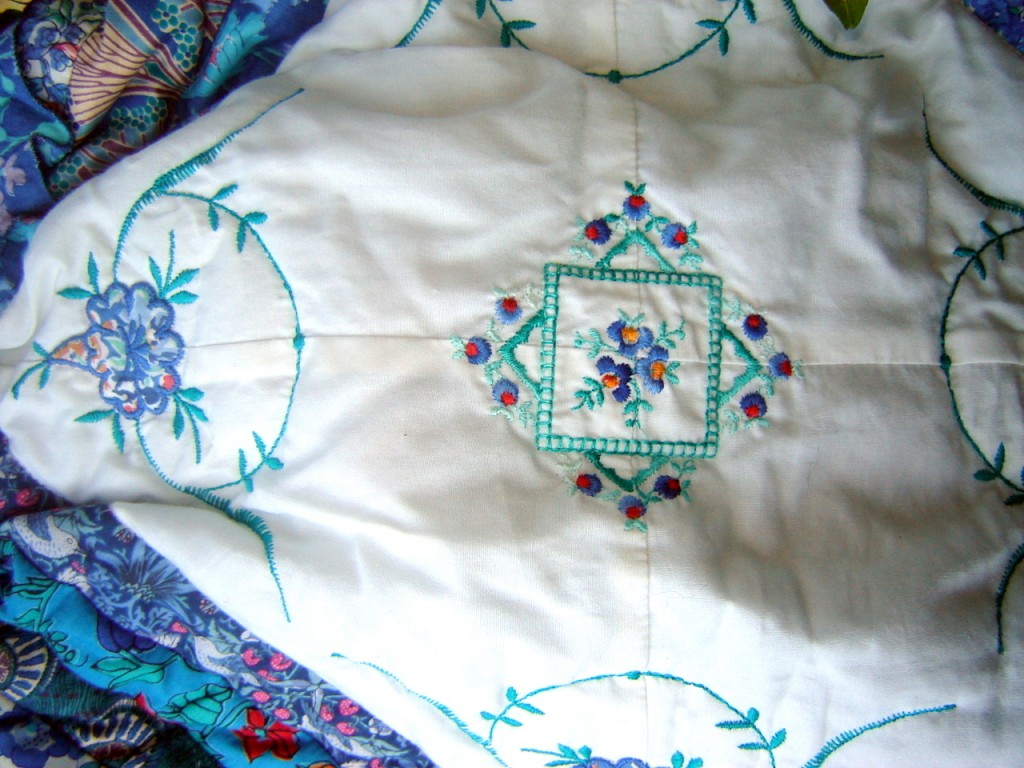
I love this technique. It is so much fun that I wish I had time to do a little quilting now. My Liberty stash is beckoning, asking me why I am not at liberty to do so. The phrase “Life, Liberty and the Pursuit of Happiness” comes to mind. For me, it reads “Life gets in the way of my Pursuit of Liberty Happiness.” Corny, I know.
NOTE: I know that in today’s rules of grammar it is incorrect to capitalize some of these words. But when they were written in our Declaration of Independence, the use of upper case letters for any significant word in a sentence was the norm. Can you tell I was an English major?

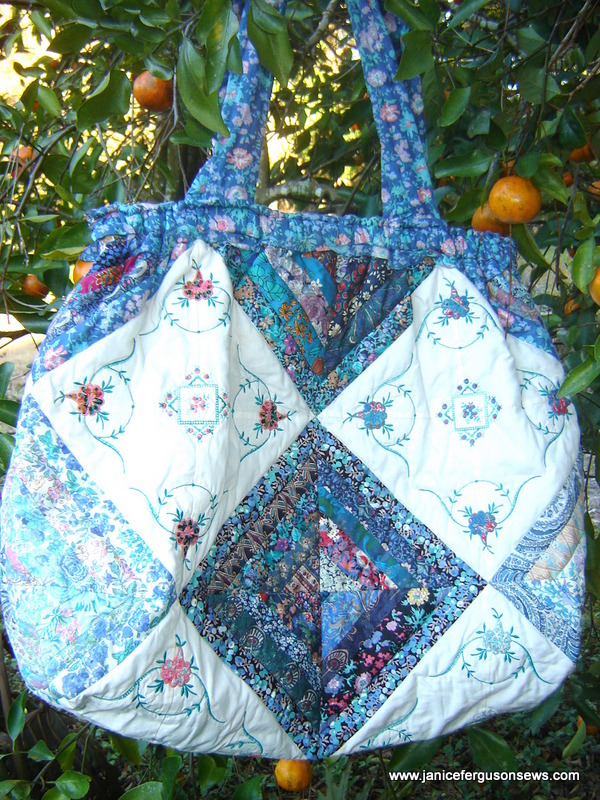
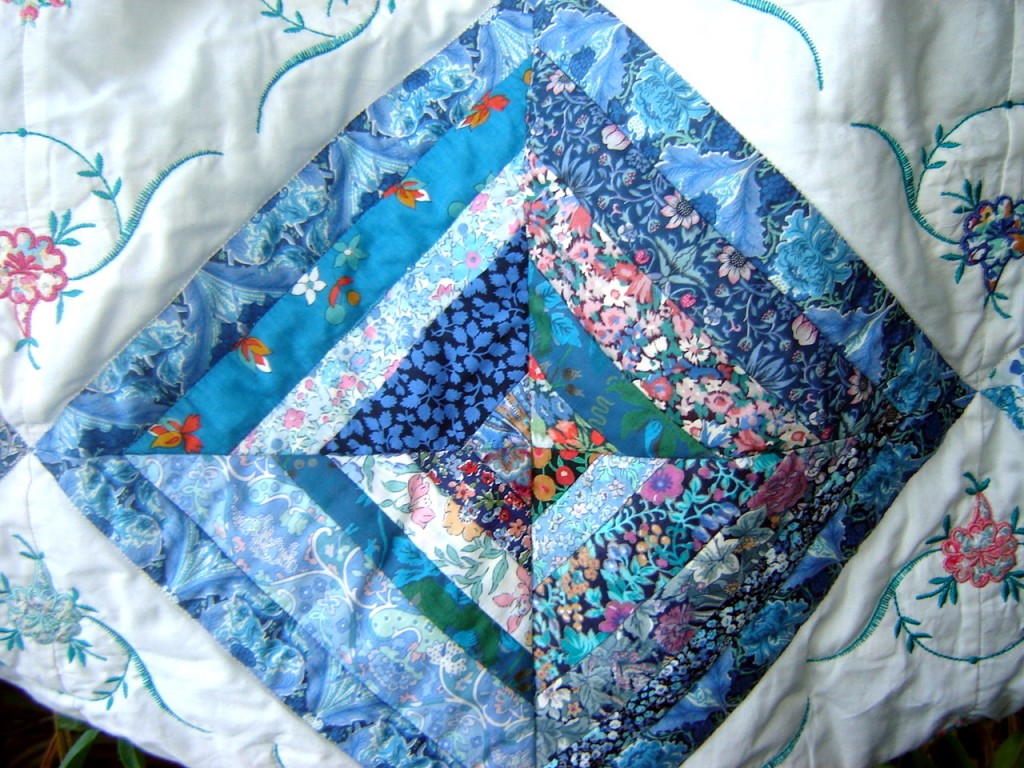
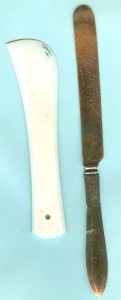
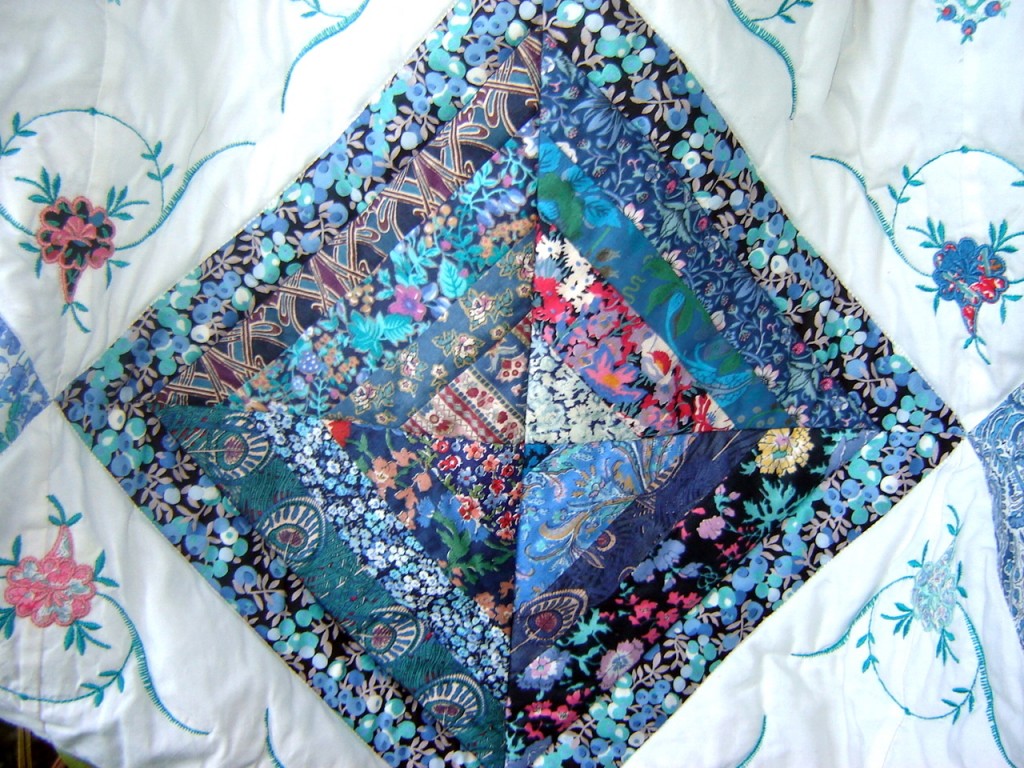

4 responses to “Liberty Tote”